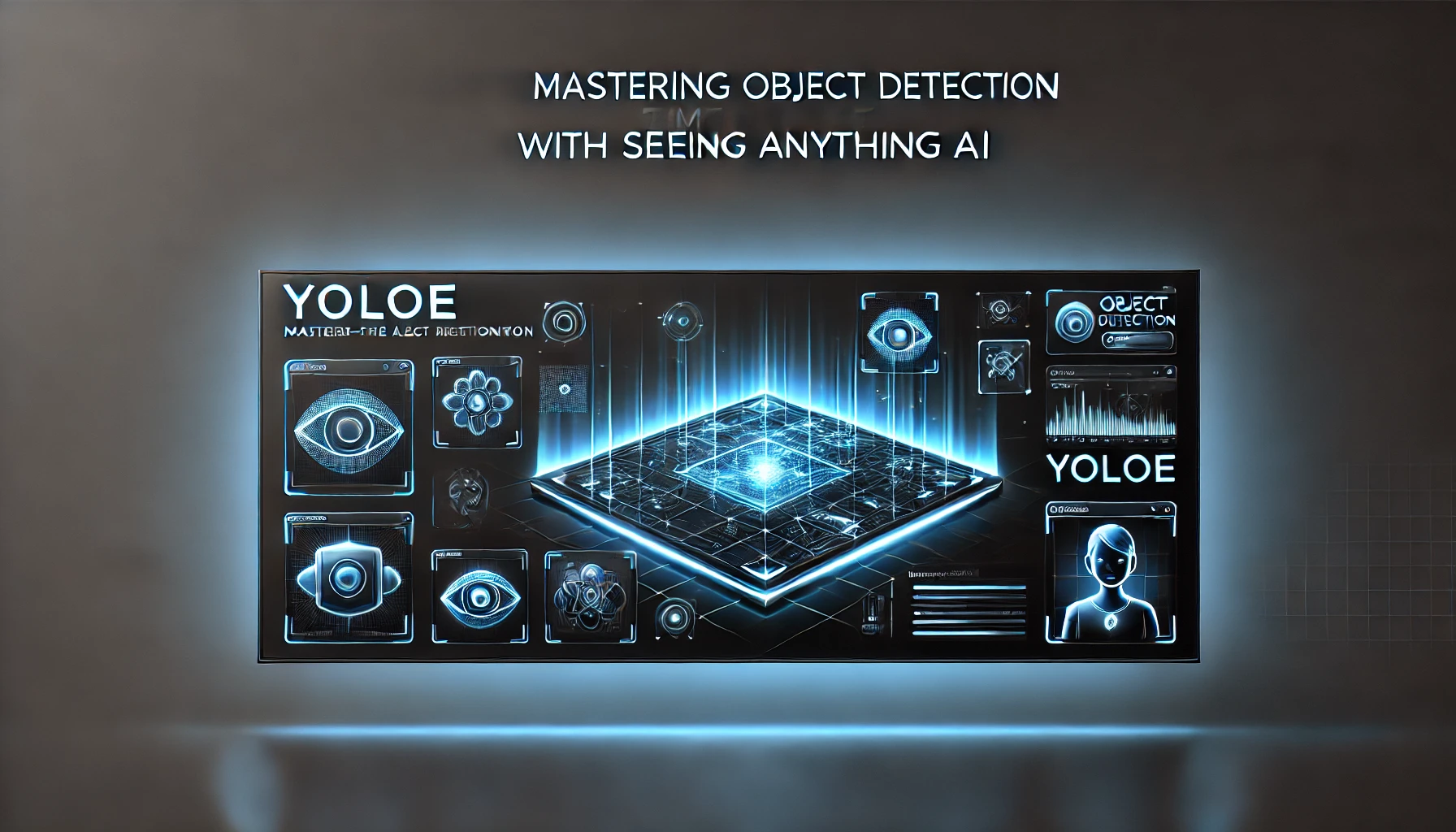
April 29, 2025
YOLOE: Mastering Real-Time Object Detection with Seeing Anything AI
YOLOE: Mastering Real-Time Object Detection with Seeing Anything AI
How do self-driving vehicles detect pedestrians in real time? Or how security cameras instantly spot doubtful activity? Real-time object detection drives it all, and today, I will discuss YOLOE, a recent advancement in the YOLO family.
YOLOE, or You Only Look Once Enhanced, improves object detecting speed and accuracy. And guess what? It elevates real-time perception with "Seeing Anything" AI. You are at the right place to try AI-driven vision, construct an object detection system, or geek out about deep learning. Let's begin!
Understanding YOLOE and "Seeing Anything" AI
Before we start the programming, let's discuss why YOLOE matters. Your Only Look Once (YOLO) is a common concept in object detection. It is known for its extreme speed and precision. YOLOE improves things.
YOLOE improved object detection by enhancing model efficiency and accuracy. Faster inference, anchor-free identification, and micro object handling. Raspberry Pi and Jetson Nano edge devices get better detection, fewer false positives, and results in real time.
Where does "Seeing Anything" AI fit? It makes YOLOE smarter. Beyond object detection, it increases contextual awareness by interpreting contexts, monitoring movement, and responding to changing environments. This lets machines, AR (Augmented Reality), and AI-driven assistants "see" and comprehend the world.
Exciting, right? Try YOLOE and construct a real-time object detection system!
Setting Up the Development Environment
Start by setting up our coding environment. Installing Python gets you halfway there. Just launch your terminal or command prompt and install the libraries:
pip install torch torchvision opencv-python numpy matplotlibPyTorch for deep learning, OpenCV for images and video streams, and NumPy for fundamental computations. After installing everything, we can load and run YOLOE.
Loading YOLOE and Running Inference
Start by loading and running our YOLOE model on a static image. Don't you have any YOLOE model files? Find pre-trained ones online. To load a yoloe.pt model file, do the following:
import torch
from yoloe_model import YOLOE # Assuming a YOLOE wrapper
model = YOLOE("yoloe.pt") # Load pre-trained model
model.eval()
Let's try it on an image and see what happens!
import cv2
image = cv2.imread("test.jpg")
detections = model.detect(image)
for box, label, confidence in detections:
cv2.rectangle(image, box[:2], box[2:], (0, 255, 0), 2)
cv2.putText(image, f"{label} {confidence:.2f}", box[:2],
cv2.FONT_HERSHEY_SIMPLEX, 0.5, (0, 255, 0), 2)
cv2.imshow("YOLOE Detection", image)
cv2.waitKey(0)
cv2.destroyAllWindows()With just a few lines of code, we now have a way to detect objects! Using confidence scores, the model makes boundary boxes and names things.
But static visuals are only the start. What about real-time object detection? Make it happen!
Real-Time Object Detection with a Webcam
The fun starts when your AI model works in real time. Imagine pointing your camera at a room and seeing people, furnishings, and even your pet immediately. How to accomplish it using YOLOE:
cap = cv2.VideoCapture(0)
while cap.isOpened():
ret, frame = cap.read()
if not ret:
break
detections = model.detect(frame)
for box, label, confidence in detections:
cv2.rectangle(frame, box[:2], box[2:], (0, 255, 0), 2)
cv2.putText(frame, f"{label} {confidence:.2f}", box[:2],
cv2.FONT_HERSHEY_SIMPLEX, 0.5, (0, 255, 0), 2)
cv2.imshow("Real-Time YOLOE", frame)
if cv2.waitKey(1) & 0xFF == ord('q'):
break
cap.release()
cv2.destroyAllWindows()Run this script to detect objects live on your camera! See YOLOE in action by moving about, holding up objects, or testing it on a busy street.
Fine-Tuning YOLOE for Custom Object Detection
What if you want to detect your own objects, animals, or handwritten numbers? YOLOE offers custom dataset fine-tuning.
Create a YOLO dataset (images + label files). Train YOLOE using transfer learning after dataset preparation:
model.train(data="custom_dataset.yaml", epochs=50)Your model will detect your desired objects after training, which may take some time. Retail automation, medical imaging, and industrial safety benefit from this.
Conclusion & Next Steps
So there you have it! You created a YOLOE-based real-time object detection system. We have examined how YOLOE advances AI vision with static image detection and real-time video analysis.
Here's what to do after learning the basics:
- Create a mobile and edge device optimized model.
- Implement "Seeing Anything" AI for contextual understanding
- Test many YOLOE versions to enhance accuracy
YOLOE lets you develop smart apps that can perceive the world using AI-driven vision, which is changing industries.
567 views
